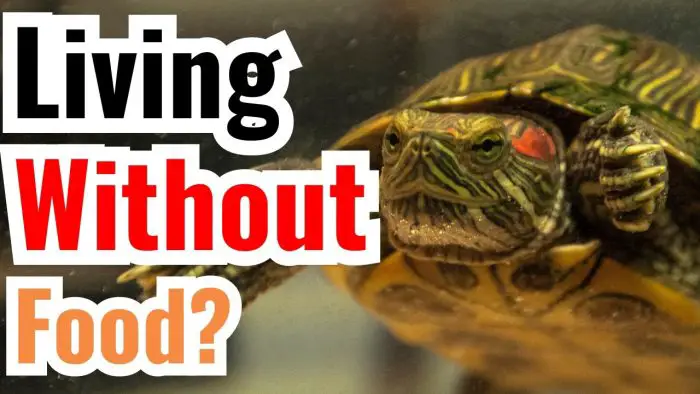
Turtles are remarkable creatures that have evolved adaptive strategies enabling them to go extended periods of time without eating. Depending on factors like species, age, health, and environment, turtles can survive weeks, months, or even longer while fasting.
What Allows Turtles to Go So Long Without Eating?
Several key evolutionary adaptations give turtles their fasting superpowers:
– Slow metabolisms – Turtles have very slow metabolic rates that enable their bodies to function minimally, conserving energy stores for long periods. Their metabolisms can slow down up to 70% while fasting.
– Energy reserves – Turtles store energy efficiently in the form of fat and glycogen to power them through long fasts. Some species also store nutrients in their shells and bones which they reabsorb when food is scarce.
– Hibernation abilities – Many turtles can enter prolonged states of dormancy or brumation during winter or droughts, allowing them to wait out months of scarce resources while expending very little energy.
– Unique organ functions – A turtle’s organs, muscles, and other tissues are specially adapted to operate at minimal levels when food and energy are limited for long stretches.
Key Factors That Influence Fasting Capabilities
While turtles are excellent fasters across species, a few key factors impact individual fasting capabilities:
Age – Younger, smaller turtles metabolize what reserves they have quicker than older, larger turtles. Hatchlings may only be able to fast for several weeks versus adult turtles fasting for months.
Health Status – Turtles afflicted by illness, injury or disorders may have compromised fasting abilities relative to very fit turtles.
Species – Sea turtles that migrate long distances can fast for months at time. Land tortoises in arid regions are also impressive fasters. Aquatic turtles that don’t hibernate tend to have shorter fasting spans.
Time of Year – Fasting capabilities may fluctuate across seasons. Turtles fast more easily while hibernating than during active summer months.
Environmental Conditions – Ambient temperature, humidity, aridity, rain patterns and other habitat factors influence fasting capabilities in the wild. Captive turtles may fast differently.
How Long Can Different Turtle Species Go Without Eating?
While generalization across hundreds of species isn’t fully accurate, some patterns and examples help illustrate turtle fasting capabilities:
Sea Turtles – Months of fasting while migrating vast ocean distances. Loggerheads may fast for 50-60 days while migrating. Leatherbacks and green sea turtles may fast for even more astonishing spans at sea.
Land Tortoises – Impressive capabilities, like the Desert Tortoise fasting over a year without eating during drought and hibernation underground.
Aquatic Turtles – Quite variable by habitat and hibernation behaviors, ranging from only days/weeks in warmer regions up to 6 months while hibernating in colder climates.
Box Turtles – Terrestrial species often in more northern zones with distinct rainy/dry periods and hibernation. They can frequently fast for months at a time.
Side-necked Turtles – These aquatic South American species are adept at fasting for many months while waiting out dry seasons in dried mud.
Consequences of Fasting and Limits of Starvation Resistance
While most turtles have evolved to withstand incredible spans without food, extended fasting does carry consequences and limitations:
Fat/Nutrient Loss – Burning through stored energy reserves causes fat loss and depletion of nutrients like vitamins/minerals. This manifests in declining health over time.
Compromised Defenses – Fasting eventually suppresses turtle immune function and anti-parasite defenses, risking eventual infection and disease.
Organ Damage – Prolonged starvation can stress organs like kidneys and liver. Digestive systems may also degrade over very long fasting periods.
Behavior Changes – Extreme hunger pangs eventually motivate turtles to expend crucial energy reserves to actively seek food using movement/migration.
Increased Mortality – While no absolute starvation point applies across species, at a certain extent fasting leads to organ failure, muscle wasting, disease susceptibility and eventual death.
Recovery Factors When Feeding Resumes
When a well-adapted turtle ends its fast and food becomes available again, several factors influence how rapidly they can bounce back:
– The longer the fasting duration, the longer recovery takes. Short fasts rebound quicker.
– Younger turtles rehabilitate faster as they are more metabolically dynamic.
– Omnivores may recover quicker with balanced diets versus solely herbivorous or carnivorous species.
– Abundant, nutrient-rich foods enable faster gains than limited poor nutrition supplies.
– Warmer seasonal temperatures spur feeding and digestion better than cold times limiting food intake.
– Healthier turtles with robust immune function rehabilitate quicker than the diseased.
– Species and their associated traits impact rates of recovery following marked fasting periods.
Caretaking Best Practices for Optimal Turtle Fasting Health
For the best shot at supporting a turtle’s evolved fasting adaptations caretaking should focus on:
1) Ensuring adequate body condition prior to predictable fasting cycles like hibernation
2) Providing proper habitats/enclosures tailored to species behavioral & seasonal fasting norms
3) Supplying adequately diverse, nutrient-rich foods to power pre- and post- fast recovery
4) Facilitating natural, healthful cycles of activity, dormancy, light variation and other care aspects attuned with fasting contexts
5) Supporting strong baseline health via proactive wellness checks, light preventative medicine if indicated and prompt illness treatment
With a ecology centered approach focused on working in harmony turtle fasting capabilities, even multi-month starvation spans can maintained safely for optimum health and conservation outcomes.
The remarkably adapted fasting abilities of turtles evolved over eons to make them champions of feast or famine survival. By respecting natural cycles and applying sound principles of care, even lengthy fasting periods can be maintained safely without unduly compromising turtle health. Overcoming months without food is business as usual for these impressive creatures.
